New Jersey, USA
-
Location
-
Phone








Comprehensive Step By Step Guide to Mobile App Development
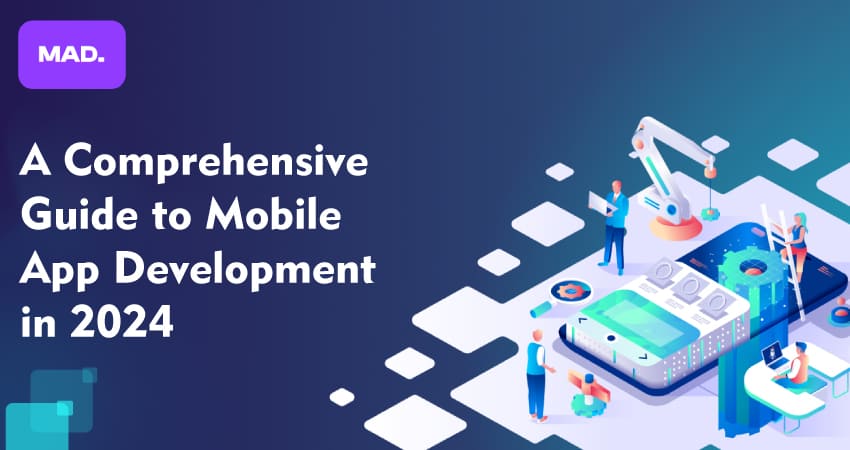
Mobile application development has emerged as a key component in organizations’ and companies’ operations throughout numerous industries. This is especially valid for the coming day where the number of smartphone users has increased tremendously around the globe and consequently the requirement for mobile application solutions that are innovative, easier, and more efficient also augments. This year 2024 has new trends of the progressive technologies and enhanced approaches in the sphere of mobile application development. The detailed reference source will explore the relevance of creating mobile apps in 2024, furthermore, it will uncover trends, tools, and approaches to stand out in this field.
In the rapidly changing world and with the use of available technologies, mobile apps are important tools in communicating with the totality of the users and increasing sales and visibility among others. Anyone from an aspiring entrepreneur, an aspiring developer or an experienced business executive, it is important to remain informed with the goings on of the current trends and methodologies in mobile app development. The goal of this guide is to offer as much information as possible concerning the anticipated experience in 2024 and the general mobile app development process.
“In 2024, mobile app development is crucial for businesses to reach a growing global audience of smartphone users. This comprehensive guide covers key trends and technologies, including AI, machine learning, 5G, IoT, AR/VR, and blockchain, which are shaping the future of mobile apps. It explores different development approaches—native, hybrid, web, and cross-platform—and highlights essential strategies for success, such as focusing on user experience, performance, security, and leveraging data analytics. The guide also addresses challenges like fragmentation, security concerns, user retention, and app store guidelines, emphasizing the need for continuous innovation and collaboration with skilled developers.”
The Necessity Of Mobile Applications
Mobile apps are now mandatory if a business is to target its audience effectively. Mobile apps remain the future- a future that is already here- for organizations that wish to make a direct connection with their target audience. Mobile apps have endless possibilities for connections, sales and clients’ trust: there are over 6 billion of the world’s population using smartphone. They help the companies to deliver targeted experiences, optimize the processes, and unlock new sources of income.
Portrait Of Change In Mobile Application Development
In the last ten years, the development of applications for portable devices has gone through enormous changes. Currently, mobile application development goes beyond the creation of simple applications like utility applications to the development of sophisticated applications with the utilization of artificial intelligence. Moving into 2024, this evolution advances in the use of AI, Ml, IoT, and 5G to enhance the intelligence, responsiveness, and efficiency of mobile apps.
Trend Analysis Of Mobile App Development For The Year 2024
1. Artificial Intelligence, And Machine Learning
AI and, in particular, machine learning stand behind one of the primary innovations in mobile application development. These technologies enable apps to have individuals’ behavioral patterns with a given app analyzed and predicted to provide recommendations. In 2024, behavior and content recognition, along with the smart controls of UI and simpler interface will be more incorporated into the mobile apps through the AI & ML.
Mobile apps are no longer optional; they are a necessity for businesses aiming to reach their audience effectively. With over 6 billion smartphone users worldwide, mobile apps offer unparalleled opportunities for engagement, sales, and customer loyalty. They enable businesses to provide personalized experiences, streamline operations, and tap into new revenue streams.
2. 5G Technology
5G introduction is expected to redefine the whole mobile app development prospect. Due to its greater bandwidth, and lower latencies, 5G, will enable a new generation of applications with higher data content. To the developers 5G can mean real time applications, improving the AR/VR interface and offering most efficient streaming services.
3. Internet Of Things (IoT)
Technology, mainly the IoT, is constantly progressing to make devices interact with each other and harmonize together. In 2024 the mobile application will act as a controller and manager of the IoT devices. For everything ranging from home automation to industrial uses of IoT, mobile applications will be the master interface.
4. Augmented Reality (AR) And Virtual Reality (VR)
Augmented Reality (AR) and Virtual Reality (VR) are two technologies that are a form of reality on the computer interface. AR and VR are longer considered as novelties of the gaming and entertainment industry only. By 2024, these technologies will be used quite commonly in learning systems, health care, shopping, and estate industries. Enhancements made to and adoption of mobile applications using AR and VR will offer tastes and interactive experiences to the users including tryout applications for clothing, fashions among others as well as educational simulations.
5. Blockchain Technology
The topic under discussion is suitable as it is showing the development of blockchain technology beyond cryptocurrencies. From the case of mobile application development, blockchain can improve the concept of security, transparency and data credibility. Blockchain implementation will have a positive impact on digital wallets, dApps and supply chain management solutions.
6. Cross-Platform Development
The reason for its use is in the desire of organizations to expand the circle of their target consumers with the help of cross-platform frameworks, such as Flutter and React Native. These frameworks enable the developers to develop applications that can be run both on iPhone and Android based smartphones which proved to be time and cost effective and also provide with good performance and native look and feel.
7. Progressive Web Apps (PWAs)
An application blended between the web and a mobile app, Progressive Web Apps deliver an excellent performance and are installation-free. Therefore, the PWAs will remain popular in 2024 as it is an effective and cheap way of reaching the users of the different devices and operating systems.
8. Voice Technology
Smart Voice Assistants such as Siri, Google Assistant, and Alexa are the part of the new generation UI layer. Voice integration in point and click applications enables the use of applications that respond to voice input commands making them more convenient. In 2024, people will have advanced voice interactions – better and more contextual.
The Process Of Developing A Mobile App
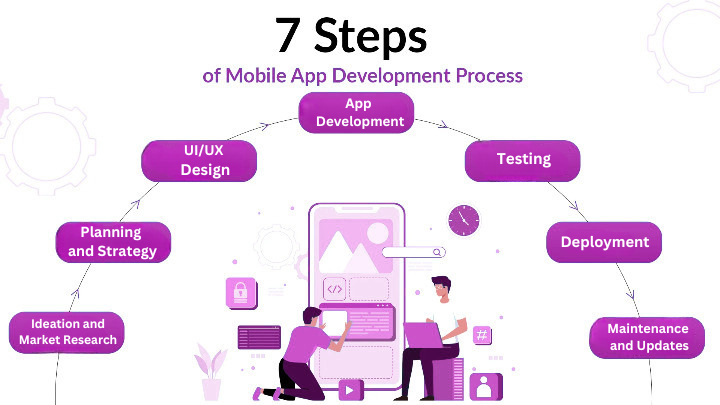
When it comes to developing an m-APP, one has to follow a number of phases which are planning, creating, testing and launching. The following represents a breakdown of mobile app development in the year 2024:
1. Ideation And Market Research
To begin creating a mobile app, there is a need to define the concept and carry out analysis of the market. It entails getting to know the user base, users’ needs, competition, and finding out how the app shall benefit the user.
2. Planning And Strategy
After this step, another crucial process is the establishment of a business-case plan that will map out the project in detail. It also encompasses the specification of the apps in terms of its features and functions, choice of appropriate technologies and the time and money that would be required. This way, there is a clear direction on what needs to be done and where, thus achieving the laid down goals of the business.
3. UI/UX Design
The usability of the application as well as the design of the interface which are abbreviated as UX and UI respectively are important aspects of mobile application development. Ideally, every application must meet certain characteristics that touch on usability, look and feel, and interaction. By 2024, UX/UI design will occupy new challenging positions that aim at designing the most engaging UX/UI for the target customers with a significant accent on accessibility and inclusiveness.
4. App Development
The development phase entails coding of both the front-end and the back-end of the application’s interface. On the basis of the need of the project, a developer can decide whether to go with native app development, operating on Swift for iOS and Kotlin for Android or a cross-platform app development framework such as Flutter and React Native.
5. Testing
The importance of testing can be explained by the fact that it helps to find problems in the functionality, reveals the incompatibility of the application with devices, and confirms its effectiveness. Functional, usability and security testing are performed with the help of automated testing tools and manual testing techniques. It is performed regularly so that right from the development stage the app is strong and stable.
6. Deployment
When the developed app gets to this stage, the app is now fit for launch or deployment. It entails making the app available on the application stores, that is Apple App Store and Google Play Store, and meeting their requirements. ASO strategies are used to improve the relevance of apps and consequently, people’s desire to download them.
7. Maintenance And Updates
Indeed, mobile app development is not over once the app has been deployed. This implies that there is a need to constantly work on the app to ensure that it is up to date and free from bugs that make it function normally. Bug fixes refer to correcting errors arising from the previous version, new versions bring new features, and responsive versions deal with user expectations and new technologies.
Types of Mobile App
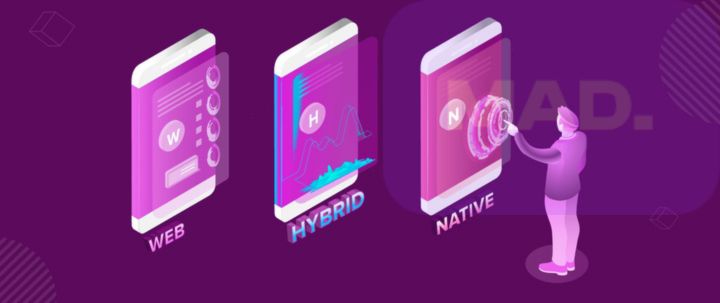
The process of app development can be categorized into four distinct approaches, each with its own set of advantages and disadvantages. The selection of a particular mobile app development framework or approach depends on various factors, including project requirements, timeline, and team dynamics. Let’s explore these approaches:
Native App Development

Native app development involves creating applications specifically for one mobile platform, such as Android or iOS. Developers use platform-specific programming languages and tools, such as Java or Kotlin for Android and Objective-C or Swift for iOS. This approach offers superior performance and ensures a seamless user experience because the app is optimized for the platform’s software and hardware.
Native apps have full access to device APIs and features, integrating well with advanced functionalities like sensors and GPS. This approach is ideal for complex applications that require rich user interfaces and high performance.
Hybrid App Development

Hybrid app development merges aspects of both native and web applications. This process uses web technologies like CSS, JavaScript, and HTML to create apps that can run on multiple platforms using a single codebase.
Hybrid apps can access native device features through plugins and offer a faster development cycle compared to native apps. However, they may face performance issues, particularly with complex user interfaces. Despite this, hybrid apps provide a cost-effective development process and quicker deployment.
Web App Development

Web Apps are web-based applications that deliver a user experience similar to native apps within a web browser. They use web technologies like HTML, CSS, and JavaScript to provide cross-platform compatibility.
Web Apps offer several benefits, including quick updates, offline capabilities, and responsive design for various screen sizes. They are well-suited for projects prioritizing accessibility and reach, such as e-commerce websites or content-based apps. However, they may not have as much access to device-specific features as native apps.
Cross-Platform App Development
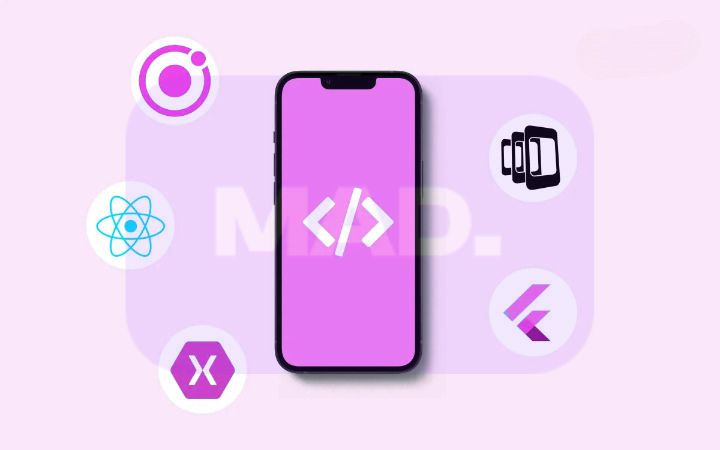
Cross-platform app development enables developers to create code that functions seamlessly on multiple platforms with minimal modifications.Frameworks such as Xamarin, Flutter, and React Native are commonly used for this approach.
This method enables usability across Android, iOS, and web applications using a single codebase. Cross-platform development is ideal for projects with tighter budgets and timelines.
Strategies Of Mobile Application Development In 2024
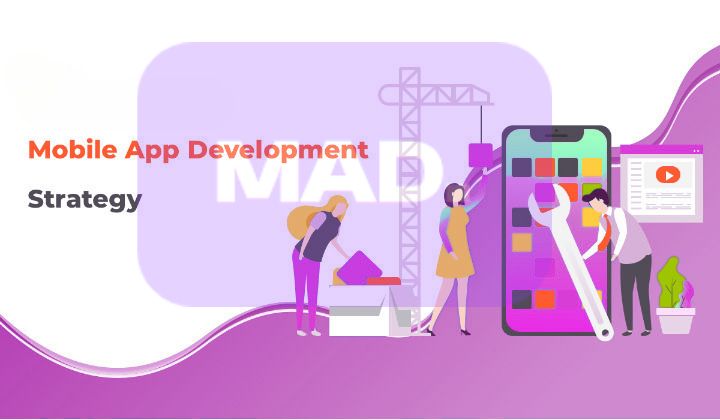
1. Focus On User Experience
The experience of the users should be central to the whole idea of creating mobile applications. Gaining insight into inhabitants’ processes, expectations, and frustrations can assist with designing an application that will provide value and impress the user. Following the users’ suggestions and performing usability testing can greatly improve the application’s UX.
2. Prioritize Performance And Speed
App responsiveness and its speed tend to act as major determinants of perception and usage frequency on the part of the users. Some of the ways through which app performance could be maximized include shortening of the load time of an app and frequent crashes and general ease of navigation of an app. The use of other technologies such as 5G can broaden more sense and speed of the app that is developed.
3. Ensure Security And Privacy
However, with more and more people becoming cautious of the data they input in these applications and that which is being harvested from their devices, the importance of the secure mobile applications cannot be overestimated. This includes issues to do with the use of encryption on data, the use of strong authentication methods and the meeting of the data protection acts such as GDPR and CCPA. Cybersecurity should also be set up and undergo checkups as often as possible to avoid a security threat towards the app or its users.
4. Leverage Data Analytics
Analytics help to understand users’ behaviors, outcomes of the launched application, and the tendencies in the targeted market. It will be important to organize measures to include analytics tools into the app which will allow us to control some indicators, as well as make the right decisions based on the results of analysis. Next year, 2024, the concept of analytics and AI as innovative approaches towards mobile applications will be significant.
5. Adopt Agile Methodologies
This concept draws attention to flexibility, cross team collaboration and continuous process improvement to development. The organizational agility can actively provide the development teams with the ways to change their approach and deliver small improvements, thus offering a better product. Agile methodologies also help in improving in terms of communication between the different members of the project and the stakeholders.
6. Embrace Innovation
This specific market is the mobile application industry, which is dynamic and can change with new technologies and trends. Ideally, it is advisable and possible to implement innovation and keep an eye on the recent trends to create an edge over competitors. Some ideas to capture the audiences are trying out the new technology and incorporate it such as AR, VR, and blockchain.
7. Effective Marketing And ASO
Creating a superior application is one thing, but marketing has to be done well in-order to sell the product. There are quite many ASO (App Store Optimization) methods that can influence the app’s positioning in app stores. Also, using social media channels, content marketing and paid promotion on the app store can help to push the downloads as well as increase user interactions to the application.
8. Collaborate With Skilled Developers
To a great extent, it primarily depends on the professionals who are involved in the work at the stage of creating a mobile app. Working with reliable developers who know the up-to-date tools and standards will help to create the quality product. In the same manner, the provision of training, education, and development for the human resource can also help in updating the employees with the newest trends in the industry.
Challenges That Occur In The Development Of Mobile Applications
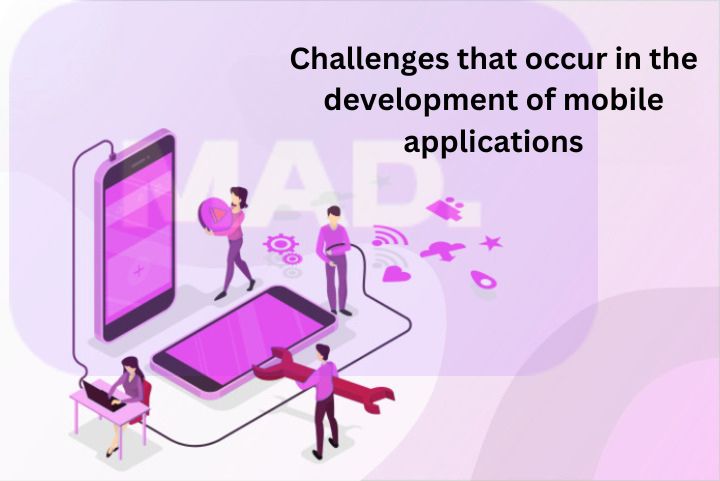
1. Fragmentation
There are many challenges that may be posed by the development of mobile applications – the variability of devices is enormous and may be beyond number, the variety of operating systems possible is immense and the variability of the screens is also almost endless. Testing on different platforms and devices as well as resolution compatibility in order to have an assurance of the best consistency and performance is also a great necessity in this field. It also results in efficiency issues and longer development time and costs.
2. Security And Privacy Concerns
As it was mentioned before, with the presence of a higher quantity of applications storing and processing various kinds of sensitive information, protection has emerged as a crucial issue. Due to the increasing regulation such as the GDPR and the CCPA, it becomes critical for developers to incorporate proper security management into the design of their applications. Security check-ups and upgrades should be done on a consistent basis as this would fore close security break-ins and gaps.
3. User Retention
Acquiring users for an app isn’t a major job; however, the next step of holding their attention is the real task. To achieve high user retention rates improvements have to be made often, they have to take into consideration users’ preferences and they also have to constantly adapt their communication strategy. This is because comprehending the numerical data depends on the specific users’ behavior and identifying their needs may contribute to higher levels of retention.
4. Performance Optimization
Users, on the other hand, seek to use reliable and efficient applications hence the need to have the best performing apps. For performance optimization, one has to make sure that the load time is as small as possible, the chance of crashes is minimized and the site has to be easily to navigate. Performance testing should be conducted frequently; this increases the ability to detect problems that affect the user.
5. App Store Guidelines.
To submit an app to app stores such as Apple App Store and Google Play Store sometimes, the developer needs to abide by their rules. Penalties include rejection or removal of the app from the store or platform it intends to be posted on. There appears to be need for developers to ensure that they have the latest guidelines and to ensure that their apps conform to the set standards.
6. Cultivating The Skills Necessary To Learn
About the mobile app market it is necessary to note the fact that this market tends to develop constantly with the help of the introduction of different technologies and tendencies. It is difficult to maintain the modern knowledge and improve the application accordingly. Explaining this, Ryan said, developers need to learn refreshed and professionally developed, continuous practice retained all due to quick updates on trends.
Conclusion
Mobile app development in 2024 has its potential and the prospect appears rather thrilling. Thus, the tendency of using new trends, applying new technologies, and following the best practices with the help of various applications helps businesses develop effective and engaging applications.
For the future, it can thus be asserted that innovation, along with a concentrated Amalgamated focus on the user will prove to Amalgamate a competitive advantage. Modern business realities can crush you if you do not have a basic understanding of mobile app development, no matter whether you are a startup or a developer or already a huge business company.
MAD is a top app development company in the USA, a high-performance low-code platform that enables rapid and easy mobile app development compared to traditional coding methods.


